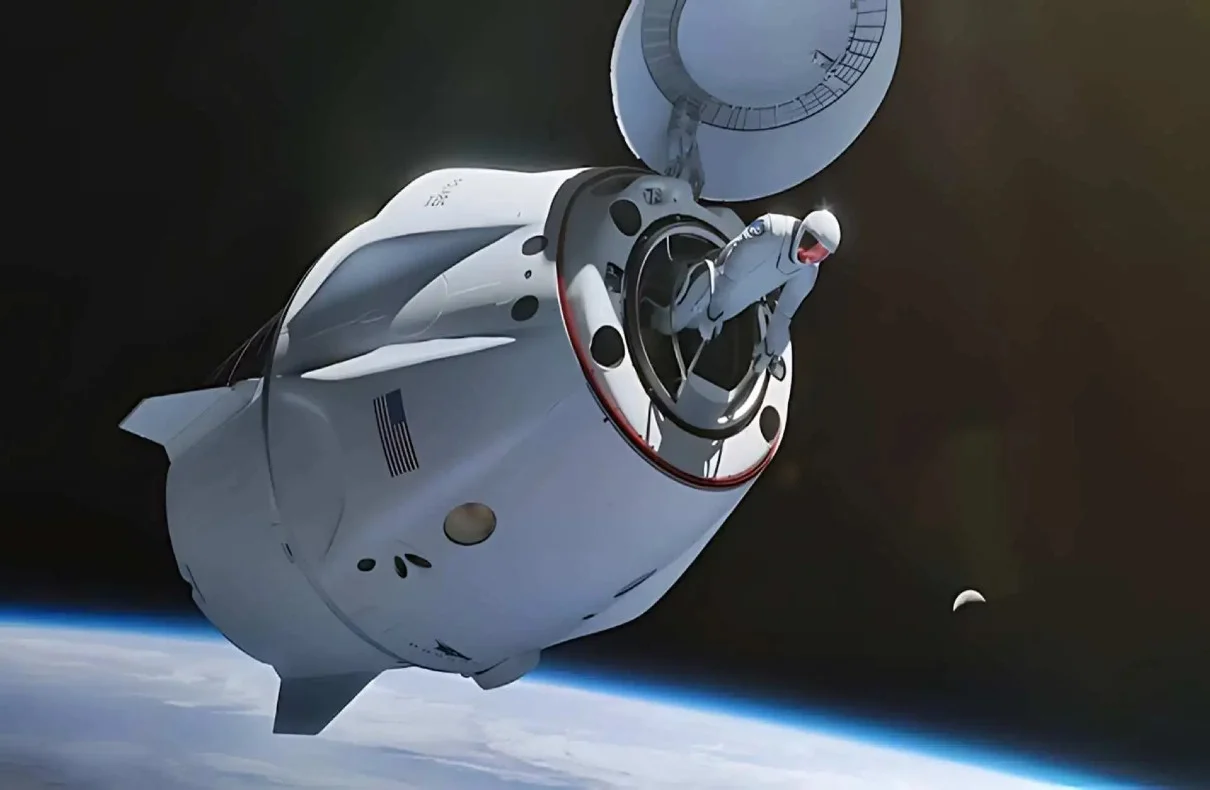The SpaceX Polaris Dawn mission concluded with a successful splashdown off the coast of Florida on Sunday morning. The non-government astronauts on the team achieved a first for spacewalking history.
This private research looks at how stress, space radiation, and microgravity affect human health in an effort to shed new information on how the human body adjusts to space circumstances and what this means for upcoming missions to Mars.
Having access to space more frequently allows for more experiments and a wider range of scientific pursuits. The Polaris Dawn team collaborated on 36 tests from 31 different international organizations.
The journal Nature reports that these investigations have ramifications not only for astronaut health but also for Earthly scenarios, such the creation of new medical treatments or technological advancements.
1- Opportunities to conduct experiments in microgravity
An major turning point for space science, especially in the area of microgravity experiments, is the Polaris Dawn mission.
Beyond just professional astronauts, a growing number of people are able to visit space thanks to private space flights. Researchers now have a rare chance to investigate the effects of microgravity on the human body in a range of settings because to the rise in flights and crew sizes. The missions of government agencies served as the main source of funding for this kind of study in the past, which restricted the quantity and frequency of studies conducted.
As more people participate in these missions without the intensive training of professional astronauts, a broader and more representative view of how microgravity affects different types of human bodies can be obtained, accelerating the pace of discovery in this critical area for the future of space flight.
2- Effects of microgravity on bone structure
A major focus of Polaris Dawn is to study the effects of microgravity on crew bone health. Previous research has shown that prolonged lack of gravity weakens the internal structure of load-bearing bones, such as those in the legs.
This weakness does not fully heal even a year after returning to Earth. The mission will allow scientists to obtain more data about how a few days in space affect this condition, which could be important for future long-duration flights, such as those planned to Mars.
After the crew members return to Earth, high-resolution X-rays of their wrists and ankles will be taken by University of Calgary kinesiologist Dr. Leigh Gabel.
With the help of these images, researchers will be able to evaluate any alterations in bone density and contrast the results with earlier research done on astronauts who spent months aboard the International Space Station. Despite its brief duration, the Polaris Dawn mission will yield important insights on the effects of even brief microgravity stays on bone health.
These studies of bone structure are essential not only for space travel, but also for medical treatments on Earth. Understanding how to prevent or reduce bone loss in microgravity could lead to more effective treatments for conditions such as osteoporosis. In addition, advances in this field will also help design exercise programs and technologies that protect the health of astronauts on long-duration missions outside Earth orbit, which is essential for interplanetary exploration.
3- Neuroocular syndrome associated with space flights
Spaceflight-associated neuroocular syndrome (SANS) is one of the most intriguing health problems faced by astronauts.
SANS causes permanent changes in astronauts’ vision, and in some cases even irreparable damage. Such vision appears to be caused by the accumulation of fluid, which on Earth is naturally drawn out by gravity. However, in space, this fluid can accumulate and create abnormal pressure on the eyeball, affecting vision.
To further investigate this condition, Polaris Dawn crew members have used smart contact sensors that record fluid pressure in the eyes during flight. These devices have been given the opportunity to monitor eye pressure in real time and analyze how it relates to the mystery of SANS. This approach is key and can provide basic data for preventing and treating this syndrome in the future, since so far visual health has been one of the main concerns of space travel.
The findings from the mission will help develop strategies to protect astronauts on missions to distant targets such as Jupiter and Mars. Eye health is important in these reviews, as any visual problems could impact astronauts’ operations in critical environments.
4- Study of the effects of space radiation on the body
Exposure to space radiation, which is mostly made up of highly charged particles that can enter the body and harm DNA and other biological components, is one of the largest risks associated with prolonged space travel.
Biological samples, including DNA and RNA, obtained prior to, during, and post-flight on the Polaris Dawn mission will be analyzed in order to carry out comprehensive studies on the effects of radiation on crew members’ bodies. This strategy is necessary because extended space travel—including upcoming missions to Mars—will expose humans to radiation levels that are much greater than those in low-Earth orbit.
One of the main risks associated with long-term space flight is exposure to space radiation, which is primarily made up of highly charged particles that can enter the body and harm biological components like DNA.
In order to carry out in-depth research on the effects of radiation on crew members’ bodies, biological samples—including DNA and RNA—that were gathered prior to, during, and following the Polaris Dawn mission will be analyzed. People would be exposed to much higher radiation levels during extended space missions than they would be in low-Earth orbit, including upcoming voyages to Mars, therefore this strategy is crucial.
5- Impact of stress on health during space flights
Research on the effects of space radiation could contribute to the development of more effective cancer treatments, as astronauts and radiation therapy patients face similar problems regarding radiation exposure and the need to regenerate affected tissue. Advances in this field, thanks to missions like Polaris Dawn, will provide important knowledge for both health in space and on Earth.
These studies are essential for the protection of future space explorers and also have applications in terrestrial medicine. Research into the effects of space radiation may contribute to the development of more effective cancer therapies, as astronauts and radiation therapy patients face similar problems regarding radiation exposure and the need to regenerate affected tissue. Advances in this field, thanks to missions such as Polaris Dawn, will provide crucial knowledge both for space and for health on Earth.
Spaceflight is a significant source of physical and psychological stress for astronauts, and the Polaris Dawn mission is helping to enhance our understanding of how this stress impacts crew health.
Astronauts encounter harsh conditions from the minute they take out into space, such as rapid acceleration, microgravity, and radiation exposure. These conditions cause a range of emotional and physiological reactions in them.
The immune system, weariness, and sleep cycle can all be negatively impacted by stress during spaceflight, which can have a long-term negative impact on astronauts’ health and operational efficiency.
During Polaris Dawn, scientists collected medical data on crew members to assess how they handle these extreme conditions. The team at the Translational Research Institute for Space Health is in charge of monitoring the physiological changes experienced by crew members and their response to prolonged stress in the space environment.
And while this research is important for developing strategies to help reduce the negative effects of stress on future long-duration missions, such as planned missions to the Moon or Mars, where astronauts will face even more harsh conditions for longer periods of time, the results also have direct applications to mental and physical health on Earth.
The study of stress in space helps scientists develop better techniques for dealing with acute stress situations in everyday life, such as those faced by people working in high-risk environments or living in solitude for long periods of time.
SpaceX owner and CEO Elon Musk has pursued a vision of colonizing Mars, which has allowed the company to establish itself as one of NASA’s top contractors. Founded in 2002, SpaceX has quickly outpaced its traditional competitors in the aerospace industry.

